Football is the ultimate team sport, and while the quarterback is the most important player, he still has only limited control of what his team does each game.
We wanted a way to isolate a quarterback's value when he threw or ran the ball relative to what the rest of his team did on every other play. The method for this was to collect data on expected points added (EPA) from ESPN Stats & Information research. Every play has an expected point total based on factors such as down, distance to go, field position, home-field advantage and time remaining. The higher the EPA, the more successful that play was at helping the team score the game's next points.
Basically, if a quarterback had a great season despite not getting much help from his team's running game or defense, then he'll have a much higher EPA relative to the team's EPA, showing his value, and suggesting that he needs more help around him. Even if the quarterback had an average individual season, a terrible team EPA will prove that he's likely far less of the problem than the rest of the team's flaws.
When we turn our attention toward the least valuable quarterbacks of 2016, we are mostly looking at quarterbacks who held their teams back in the passing game while the other team elements (running game, defense, special teams) were usually strong.
Some of these quarterbacks still made the playoffs, and some have even been to the Super Bowl before. However, 2016 was not their finest moment. Four quarterbacks even produced less EPA than their teams did, which is difficult to do when so many of the game's biggest plays that lead to points come in the passing game.
We should also note that measuring EPA on passing plays does not separate the quarterback from his receivers or pass blockers. So this measurement filters out the quarterback from the running game, defense and special teams, but not from the rest of his team's pass offense.
Read through our various categories of passers, or skip ahead to the metric of your choice here:
Least valuable | Most valuable | Least aggressive | Most aggressive | Least accurate | Most accurate
Note: Each quarterback's total EPA and his team's EPA is listed, and the rankings are out of 30 quarterbacks/teams.


1. Joe Flacco, Baltimore Ravens
QB EPA: minus-12.3 (27th)
Team EPA: plus-37.1 (second)
QB-added value: minus-49.4
This is a bad look for a two-time highest-paid player in NFL history. Baltimore missed the playoffs for the third time in four years after Flacco squandered the second-highest team EPA of 2016. While the Ravens did not have much of a ground attack (26th in EPA), they did support Flacco with the No. 8 defense in EPA (plus-9.5) and the best special teams (plus-58.6) by a wide margin. In fact, where would the Ravens be without kicker Justin Tucker? He made 38 field goals (out of 39 attempts) while the offense contributed only 30 touchdowns.

2. Case Keenum, Los Angeles Rams
QB EPA: minus-33.2 (30th)
Team EPA: minus-3.4 (ninth)
QB-added value: minus-29.8
How bad was the Rams' offense last year? They went from the quarterback with the worst EPA in Case Keenum to a rookie (Jared Goff) who managed minus-71.9 EPA in just seven starts. The scary part is that the team EPA dropped from minus-3.4 with Keenum to minus-60.9 when Goff took over, as running back Todd Gurley never got going on the ground and the defense faltered as well. This is why new head coach Sean McVay, legendary defensive coordinator Wade Phillips and a second try for Goff are all so important for the Rams to try to rebound in 2017.

3. Trevor Siemian, Denver Broncos
QB EPA: plus-3.0 (24th)
Team EPA: plus-22.8 (fourth)
QB-added value: minus-19.8
Trevor Siemian has won the starting quarterback job for the Broncos this season, but he'll have to do much better for the offense to get back to respectability. Siemian was passable last year for a seventh-round quarterback with no experience, but the fact that he still holds the job is most significant for the doubt it casts on first-round pick Paxton Lynch's career. The Broncos provided Siemian with the No. 1 defense by EPA (plus-74.2) last year, but it is really difficult for a defense to perform at that level three years in a row. The Broncos need more out of this passing game, and that falls on Siemian again for the time being.

4. Eli Manning, New York Giants
QB EPA: plus-3.2 (23rd)
Team EPA: plus-9.6 (seventh)
QB-added value: minus-6.3
The Giants returned to the playoffs last year, but that was much more about the defense (No. 2 with 71.1 EPA) than Eli Manning's effort. While the defense should still be strong, Manning will look to Paul Perkins to provide a boost to a running game that ranked 27th in non-QB offensive EPA (minus-42.1). Manning's own numbers could see a boost with the additions of Brandon Marshall and rookie tight end Evan Engram in the receiving corps.

5. Brock Osweiler, Houston Texans
QB EPA: minus-25.6 (29th)
Team EPA: minus-26.2 (16th)
QB-added value: plus-0.6
Brock Osweiler might rank first in quarterback height, but his 9.6 rushing EPA was the only thing that prevented him from ranking last in QB EPA. However, outside of a defense that finished No. 7 in EPA (plus-15.9) despite a lost year for J.J. Watt, the Texans were a heavily flawed team that still made the playoffs thanks to playing in the AFC South. Osweiler was traded to Cleveland where he still has a chance to start, but it is likely for the best if these teams turn things over to their younger, shorter quarterbacks (DeShone Kizer and Deshaun Watson).

6. Cam Newton, Carolina Panthers
QB EPA: minus-1.1 (25th)
Team EPA: minus-4.2 (10th)
QB-added value: plus-3.2
Cam Newton might have been MVP in 2015, but the Panthers had a lot of value from the non-QB aspects of the team. Those elements did not play as well last year, but still finished above average on defense (13th) and special teams (14th). Newton also enjoyed the biggest EPA boost from penalties (plus-23.4) of any quarterback last season. While his average season usually does not rank that highly in EPA, Newton can certainly do much better than 25th, and he'll have to do so this year to get the Panthers back to the playoffs. Running back Christian McCaffrey is going to be one of the most important rookies to watch after Carolina's middling rank of 18th in non-QB offensive EPA last year.

7. Russell Wilson, Seattle Seahawks
QB EPA: plus-39.5 (19th)
Team EPA: plus-27.8 (third)
QB-added value: plus-11.7
Despite never missing a start in his career, Russell Wilson endured a few leg injuries last year that certainly limited his effectiveness. The fact that the Seahawks have already lost left tackle George Fant (ACL) for the year is troubling, but the offensive line has been a longtime problem for Wilson. When healthy, he is still one of the best in the league, and the same can be said about his defensive unit, which still ranked sixth in EPA (plus-19.6) despite losing safety Earl Thomas late in the year. The Seahawks are a contender that is just looking for better health to their stars this season, and that starts with the quarterback.

8. Carson Wentz, Philadelphia Eagles
QB EPA: plus-19.6 (20th)
Team EPA: 0.0 (eighth)
QB-added value: plus-19.6
The Eagles ranked ninth in defensive EPA (plus-7.0) and fifth in special teams EPA (plus-23.2), one of only four teams to rank in the top 10 in both. The passing game is really what held this team out of the playoffs last year. The 2016 Eagles were winless (0-9) any time they allowed an opponent to score more than 19 points and undefeated (7-0) when they kept the score below 20 points. The team is hoping that offensive additions such as Alshon Jefferey, Torrey Smith, and LeGarrette Blount provide Carson Wentz with more firepower to win those higher-scoring games this year.
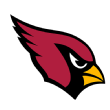
9. Carson Palmer, Arizona Cardinals
QB EPA: plus-43.3 (17th)
Team EPA: plus-16.2 (sixth)
QB-added value: plus-27.1
With Cam Newton, Russell Wilson and now Carson Palmer, we have completed the trilogy of "quarterbacks who had career years in 2015 for a top-three NFC team, but things just didn't go well last year." Palmer has a lot of talent around him, including David Johnson in the backfield and last year's No. 3 defense in EPA (plus-48.3). However, Palmer had the worst special teams support (minus-41.9 EPA) of any quarterback in 2016. Without the several game-deciding blunders from that unit, the Cardinals very well could have won nine or 10 games instead of finishing 7-8-1.
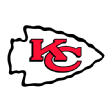
10. Alex Smith, Kansas City Chiefs
QB EPA: plus-50.6 (16th)
Team EPA: plus-19.3 (fifth)
QB-added value: plus-31.3
When you see Tyreek Hill have an All-Pro season as a return specialist, and Eric Berry make several huge returns for points on defense, you get the feeling this is not a stat in which Alex Smith would have great value. Still, he finished 16th in QB EPA -- but the Chiefs were really solid all around, finishing 13th in non-QB offensive EPA, 10th on defense, third on special teams, and even 16th in penalties. The Chiefs have a really solid roster for 2017, but it seems unlikely that Smith is ready to peak in his 13th season.
Most valuable QBs in 2016

1. Drew Brees, New Orleans Saints
QB EPA: plus-123.5 (fifth)
Team EPA: minus-122.1 (29th)
QB-added value: plus-245.6
The Saints have essentially given us the same season three years in a row: Drew Brees throws for the most yards in the NFL, the offense scores a ton of points, but the defense allows even more in a 7-9 finish. A worn-out version of Adrian Peterson may not do much for the running game, but that wasn't Brees' problem last year; New Orleans' non-QB offensive EPA was the fourth highest in the league. The issue is squarely on defense, where the Saints ranked 31st in EPA (minus-104.5) and became the fourth team in NFL history to allow at least 450 points in consecutive seasons. If Brees had even a mediocre defense, then the Saints would likely return to the playoffs for the first time since 2013.
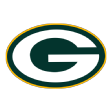
2. Aaron Rodgers, Green Bay Packers
QB EPA: plus-146.1 (second)
Team EPA: minus-89.3 (25th)
QB-added value: plus-235.3
Getting to the NFC Championship Game is a great accomplishment when the team's defensive EPA (24th) and special teams EPA (25th) both rank in the bottom quarter of the league. Aaron Rodgers scrambled his way to the second-highest QB EPA in the league while overcoming team deficiencies that would keep most teams out of the playoffs. The only reason he's not higher than Brees is that Green Bay's defense was not quite as awful as New Orleans' defense. That should be the case again this year, and it is also intriguing to see what the Packers can do with Ty Montgomery as more of a full-time running back, after his solid plus-4.29 rushing EPA in 2016 following a conversion from wide receiver.

3. Matthew Stafford, Detroit Lions
QB EPA: plus-111.2 (sixth)
Team EPA: minus-115.0 (27th)
QB-added value: plus-226.2
Detroit set an NFL record with eight fourth-quarter comebacks last season, but a lot of that was due to the defense blowing a lead late. Thankfully, Matthew Stafford saved the defense (last in EPA at minus-116.5) enough times for Detroit to make the playoffs, at 9-7. The most injured running back corps in the league led to a No. 24 ranking in non-QB offensive EPA, so things will be better if running back Ameer Abdullah can stay healthy this year. The defense has to get Stafford more possessions, as the 2016 Lions had 152 offensive drives, the third fewest by any team since 1996.

4. Matt Ryan, Atlanta Falcons
QB EPA: plus-175.2 (first)
Team EPA: minus-38.5 (18th)
QB-added value: plus-213.7
Matt Ryan was a deserving MVP in 2016, and no quarterback produced more EPA than he did. So why is he only fourth here? Atlanta ranked second to only Buffalo with plus-23.9 non-QB offensive EPA, led on the ground by the strong running back duo of Devonta Freeman and Tevin Coleman. Atlanta also had the No. 9 special teams (plus-15.6 EPA) and the defense was 26th in EPA (minus-82.5) as opposed to 31st (Brees' Saints) or 32nd (Stafford's Lions).

5. Kirk Cousins, Washington Redskins
QB EPA: plus-105.6 (seventh)
Team EPA: minus-91.1 (26th)
QB-added value: plus-196.7
Just as the Redskins barely missed out on a second consecutive playoff berth at 8-7-1, Kirk Cousins just missed out on being our fifth quarterback with an added value of more than 200 EPA. After a 4-2 start, Cousins put the team in position for wins at Detroit and in London against Cincinnati. However, the No. 28 defense in EPA (minus-96.9) allowed a 75-yard game-winning touchdown drive in the final 65 seconds to the Lions, and Washington kicker Dustin Hopkins missed a 34-yard field goal in overtime against the Bengals.

6. Colin Kaepernick, San Francisco 49ers
QB EPA: plus-12.4 (22nd)
Team EPA: minus-172.9 (30th)
QB-added value: plus-185.3
On a per-game basis, Colin Kaepernick produced more EPA relative to his team (plus-16.8) than any quarterback in the NFL last year. That doesn't mean Kaepernick was good -- he was the most valuable rushing quarterback with 21.3 EPA, but had a minus-8.9 passing EPA. This just shows how terrible the 49ers were as a team, finishing 27th in defensive EPA (minus-96.2), 19th in special teams EPA (minus-8.7), and 29th in non-QB offensive EPA (minus-49.8). The only thing that really made this team competitive in some games down the stretch was the play of Kaepernick, who remains a free agent.

7. Dak Prescott, Dallas Cowboys
QB EPA: plus-129.5 (third)
Team EPA: minus-24.6 (15th)
QB-added value: plus-154.1
While running back Ezekiel Elliott received a lot of attention last season, the single biggest reason for Dallas' improvement to 13-3 and the NFC's No. 1 seed was the instant success of Dak Prescott. He produced the third-most EPA by a quarterback last year, which shows the offense's success was about more than just the running game -- although Elliott helped the Cowboys rank seventh in non-QB offensive EPA (plus-8.0). The No. 20 defense (minus-40.0 EPA) was nothing to write home about, and between the suspensions on that side of the ball and Elliott's six-game ban this year, we'll see just how valuable Prescott can be in his second season.

8. Jameis Winston, Tampa Bay Buccaneers
QB EPA: plus-53.2 (15th)
Team EPA: minus-73.2 (23rd)
QB-added value: plus-126.4
Tampa Bay is viewed as a team on the rise thanks in large part to Jameis Winston and wide receiver Mike Evans, but the Buccaneers will need to get better play out of the other elements. The running game was 28th in EPA, the defense was 16th, and the special teams was also nothing special, at 15th. The Buccaneers are counting on the additions of running back DeSean Jackson and tight end O.J. Howard to boost Winston's success in his third season after he ranked 15th in EPA in 2016.

9. Sam Bradford, Minnesota Vikings
QB EPA: plus-54.3 (12th)
Team EPA: minus-62.2 (22nd)
QB-added value: plus-116.5
While the Vikings helped Sam Bradford with the No. 5 defense in EPA (plus-24.2), that unit really fell apart with its two worst games coming late in the season against the Colts and Packers, when Minnesota was still in playoff contention. All year long, Bradford had to account for an atrocious running game, as no quarterback received worse support from his non-QB offensive EPA (minus-62.3). If the offensive line isn't vastly improved this year, Bradford will continue to have to play it safe and hope for the best.
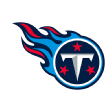
10. Marcus Mariota, Tennessee Titans
QB EPA: plus-61.8 (11th)
Team EPA: minus-49.0 (20th)
QB-added value: plus-110.7
After a slow start, Marcus Mariota caught fire last year before a broken leg in Week 16 kept him out of the top 10 in EPA. The Titans had a pretty solid running game led by DeMarco Murray (12th in EPA), but the defense (21st) and special teams (20th) still need work if the Titans are to return to the playoffs for the first time since the 2008 season. They are the AFC South favorite this year, but Mariota must stay healthy. He has already had three injuries that led to missed starts in his two-year career.
Least aggressive QBs in 2016
It's third-and-10, and your favorite team's quarterback just threw a 3-yard pass, bringing out the punt team.
Isn't that frustrating to watch? Wouldn't it be great to have a stat that measures which quarterbacks do this the most, and to what degree? This is why Air Less Expected, or ALEX for short, was created at Football Outsiders.
Inspired by conservative passer Alex Smith of the Kansas City Chiefs, ALEX measures the average difference between how far a quarterback threw a pass (air yards) and how many yards he needed for a first down. If a quarterback throws a 3-yard pass on third-and-10, then that would be minus-7 ALEX. The best application of ALEX is to look at third down, when it's really crucial to get 100 percent of the needed yards to extend the drive.

1. Jared Goff, Los Angeles Rams
2016 ALEX: minus-2.5
As sure as the sun rises in the east, Jared Goff ranks last in another 2016 statistical category. Goff had the worst third-down conversion rate (23.1 percent), and he beat Blaine Gabbert (minus-1.7) and Jimmy Clausen (minus-2.2) for the lowest ALEX by a rookie quarterback since 2006 (minimum 200 attempts). To be fair, Goff faced the longest third-down situations (8.8 yards) of any quarterback last season. Still, this is not a promising look for his future, but we'll see if a new head coach (Sean McVay) and greatly improved receiving corps help him dig out of the (very deep) bottom in 2017.

2. Blaine Gabbert, San Francisco 49ers
2016 ALEX: minus-1.2
Next to Alex Smith, Gabbert is the poster child for throwing short of the sticks on third down. He did so 64.9 percent of the time in 2015, the highest seasonal rate by a QB since 2006. That rate dropped to 50.0 percent in 2016, but Gabbert still ranked next-to-last in third-down conversion rate (26.0 percent) and should not be given another starting quarterback gig in the NFL any time soon.

3. Sam Bradford, Minnesota Vikings
2016 ALEX: minus-1.2
You might be able to play a drinking game based on how often Sam Bradford throws short of the sticks. Last season, his first with Minnesota, was his lowest ALEX yet, at minus-1.2. He still managed a respectable rank of 16th in third-down conversion rate (40.1 percent). We'll see if Bradford can get better protection this season and break out of his shell a bit more.

4. Cody Kessler, Cleveland Browns
2016 ALEX: minus-0.9
The recent history of rookie quarterbacks with negative ALEX on third down is a bad sign, but Kessler might be only the No. 3 quarterback in Cleveland this season, behind Brock Osweiler and DeShone Kizer. Kessler's rookie season could have been a lot worse, but clearly the Browns see a need for improvement right away this season, Hue Jackson's second with the team.

5. Matt Ryan, Atlanta Falcons
2016 ALEX: minus-0.2
Ryan's MVP season joins David Garrard in 2007 and Nick Foles in 2013 as the only seasons since 2006 in which a quarterback ranked 30th or lower in ALEX but was in the top six in conversion rate. It's a rare feat, but the Falcons were the top offense in producing yards after the catch last season. Ryan has actually never ranked in the top 10 in ALEX in his nine seasons, but this was the first time he was below 0.0, albeit barely so.

6. Carson Palmer, Arizona Cardinals
2016 ALEX: minus-0.2
This was a surprise, as seven of the previous nine offenses that Bruce Arians coached ranked in the top 10 in ALEX (and never lower than 18th). Palmer was third in 2015 (plus-4.3), but that season is more of an outlier for him. Palmer was 28th in ALEX for the Raiders in 2011 and 2012, and he was also the most-hit quarterback in 2016, going down 127 times.

7. Carson Wentz, Philadelphia Eagles
2016 ALEX: plus-0.2
Wentz was just above 0.0 in his rookie season, but we expect to see an increase in that number this season, with Alshon Jeffery taking over as the No. 1 receiver. Wentz actually fared best on third-and-medium (3-6 yards needed), on which he ranked 11th in conversion rate, but he was just 25th on third-and-short (2 or fewer yards) and 25th on third-and-long (7 or more yards).

8. Colin Kaepernick, San Francisco 49ers
2016 ALEX: plus-0.4
Despite a reputation for a big arm, Colin Kaepernick never ranked higher than 15th in ALEX in his first five seasons, but the plus-0.4 ALEX last season was his career low. His third-down conversion rate was also just 31.1 percent, which ranked 31st among 34 qualified passers. Kaepernick remains a free agent as of this writing.

9. Alex Smith, Kansas City Chiefs
2016 ALEX: plus-0.4
You knew he had to show up on this list eventually, but this is actually the first time since 2007 (ranked fourth) that Alex Smith had positive ALEX and did not rank 30th or lower. Still, he finished 26th, and his third-down conversion rate (38.9 percent) ranked 18th, the second-highest rate of his career. As a side note, we looked at ESPN Stats & Info's college data and found that Patrick Mahomes II had a plus-4.2 ALEX in 2016 with Texas Tech, which would be a league-leading type of number in the NFL. Big changes could be coming to the Kansas City offense in the near future.

10. Brock Osweiler, Houston Texans
2016 ALEX: plus-0.5
Brock Osweiler had the third-shortest distance (7.0 yards) to convert on his third downs but still rarely attacked the sticks. He was also below average at converting in each range, finishing 24th in short, 18th in medium and 23rd in long third-down situations. He'll compete for a starting job with the Browns this season.
Most aggressive QBs in 2016

1. Matt Barkley, Chicago Bears
2016 ALEX: Plus-4.2
Barkley was extremely aggressive for the Bears last season, throwing the deepest passes in the league at 10.6 air yards per target, and he threw short of the sticks on third down a league-low 24.0 percent of the time. A big reason for this was that Barkley's average pass came with a deficit of 8.6 points, the second-largest average deficit for any 2016 quarterback. Still, this aggression helped Barkley convert on 50.0 percent of his third-down passes, which trailed only Aaron Rodgers (51.0 percent) and Tom Brady (50.4 percent). He will back up Brian Hoyer in San Francisco this season.

2. Ben Roethlisberger, Pittsburgh Steelers
2016 ALEX: Plus-4.2
Barkley just edged out Roethlisberger for the highest ALEX, which would have been the third time since 2011 that Roethlisberger led the NFL in third-down ALEX. Roethlisberger also ranked seventh in conversion rate (45.9 percent) in what was somewhat of a down year for the future Hall of Famer.

3. Aaron Rodgers, Green Bay Packers
2016 ALEX: Plus-3.8
In all nine of his seasons as Green Bay's starter, Rodgers has ranked in the top six in ALEX, maintaining his reputation as one of the most aggressive passers in the NFL. While his conversion rate (37.0 percent) slipped to 28th in the NFL in 2015, Rodgers was back on top in 2016, converting a league-best 51.0 percent of his third-down passes.

4. Cam Newton, Carolina Panthers
2016 ALEX: Plus-3.5
Newton has been more up and down in ALEX than his peers such as Roethlisberger and Rodgers, but 2016 was his career-high ALEX at plus-3.5. The problem is that Newton has often struggled to convert these longer passes into first downs. He ranked 21st in third-down conversion rate in 2016 (38.3 percent), the fourth time in six seasons that Newton ranked 21st or lower in that statistic.

5. Jameis Winston, Tampa Bay Buccaneers
2016 ALEX: Plus-3.1
Both Winston and Newton averaged more than 10.0 air yards per pass attempt and love to throw to tall receivers, but they also had the two highest rates of off-target throws in 2016, according to ESPN Stats & Info. Winston should continue to be an aggressive passer after the Buccaneers added DeSean Jackson and rookie tight end O.J. Howard this offseason.

6. Eli Manning, New York Giants
2016 ALEX: Plus-2.8
Most of Manning's best seasons were when he ranked in the top six in ALEX, including 2009 (sixth), 2011 (sixth) and 2012 (fourth). Despite the aggressive approach, last season was really not one of Manning's finest efforts because his 35.5 percent third-down conversion rate was his lowest of the past 11 seasons.

7. Tyrod Taylor, Buffalo Bills
2016 ALEX: Plus-2.5
Taylor has been a starter for only two years, but he's finished near the top in ALEX in both campaigns -- he was second in ALEX in 2015 (plus-4.5). Like some of the others in the top 10, he's open to attacking downfield, but he's had issues doing so, as his off-target pass rate was 21.1 percent, better than only Winston (22.1 percent) and Newton (22.9 percent) in the NFL last season. We'll see how Taylor adjusts to Buffalo's trade of Sammy Watkins, as the Clemson product was his main vertical threat the past two seasons.

8. Marcus Mariota, Tennessee Titans
2016 ALEX: Plus-2.4
Mariota ranked 23rd in ALEX (plus-1.1) in 2015, so he more than doubled his distance in his second season. He ranked a solid eighth in third-down conversion rate (45.4 percent), but expectations are much higher this year after the Titans added wide receivers Corey Davis and Eric Decker in the offseason.

9. Kirk Cousins, Washington Redskins
2016 ALEX: Plus-2.3
During his first four seasons, Cousins usually stayed close to neutral (0.0) in ALEX, but he took more chances last season with respectable results, finishing 13th in third-down conversion rate. Cousins threw short of the sticks on 48.1 percent of his third downs in 2015, but he decreased that to 39.9 percent last season. He'll now adjust to the loss of offensive coordinator Sean McVay, as well as wide receivers Pierre Garcon and DeSean Jackson.

10. Tom Brady, New England Patriots
2016 ALEX: Plus-2.1
This is the first time that Tom Brady has been above plus-2.0 ALEX and ranked in the top 10 since 2009. His average ALEX rank for the period of 2010-2015 was 20th, so last season included more of an aggressive approach, most notably with the way tight end Rob Gronkowski was used downfield more often. With the addition of Brandin Cooks, Brady has one of the most loaded receiving corps of his career, and he should be attacking beyond the sticks even more.
Least accurate QBs in 2016
In 2016, Sam Bradford set a single-season NFL record for completion percentage (71.6 percent) but finished 17th in Total QBR. Clearly, completion percentage can be a misleading stat, boosted by short passes that don't lead to successful plays for an offense.
Football Outsiders has used game-charting data to create a better way of quantifying accuracy and completion percentage. The core idea is passing plus-minus, which estimates how many passes a quarterback completed compared to what an average quarterback would have completed based on each throw's distance, the yards needed for a first down, and which side of the field the pass was thrown to.
This is turned into a rate stat, denoted as C%+, that shows how many percentage points better than average the quarterback was at completing passes. Here are the 10 least accurate QBs from the 2016 season by C%+.

1. Cam Newton, Carolina Panthers
C%+: Minus-6.1 percent
Newton's alarmingly low 52.9 completion percentage last season is in need of context -- he and Jameis Winston were the only full-time starters to average at least 10 air yards per attempt. According to ESPN Stats & Info, however, Newton had the highest rate of off-target throws (22.9 percent) while pressured and still had the third-highest rate (18.5 percent) when he was not under pressure. Newton's minus-6.1 percent C%+ in 2016 is the third-lowest season for any quarterback with at least 400 pass attempts since 2006, behind Blake Bortles' minus-6.8 percent in 2014 and Brett Favre's minus-6.2 percent in 2006.

2. Ryan Fitzpatrick, New York Jets
C%+: Minus-5.6 percent
Now a backup to Jameis Winston in Tampa Bay, one could argue that Fitzpatrick has been the worst quarterback of his era to start 100-plus games. The Harvard gunslinger flung a league-high 46 go routes last season for the Jets, but his general inaccuracy was a big problem in addition to having the league's highest interception rate (4.2 percent).

3. Colin Kaepernick, San Francisco 49ers
C%+: Minus-5.2 percent
Kaepernick did not get the usual boost in C%+ from Chip Kelly's offense, partly because Kelly only utilized a league-low 15 screen passes for the 49ers last season after averaging 70.3 screens per season with the Eagles in 2013-2015. Kaepernick's accuracy was poor at times, but he also had the highest rate of dropped passes (5.7 percent) from his receivers. Kaepernick, 29, remains a free agent.

4. Blake Bortles, Jacksonville Jaguars
C%+: Minus-4.2 percent
Bortles improved from a miserable rookie season (league-worst minus-6.8 percent C%+) to a more hopeful minus-1.6 percent C%+ in 2015. Things went backward last season, however, when Bortles threw 42 go routes and 28 fades but only completed 15 of those 70 passes. Without pressure, Bortles had a league-worst 38 percent off-target rate when throwing the ball at least 10 yards down the field in 2016.

5. Case Keenum, Los Angeles Rams
C%+: Minus-3.9 percent
In the past four seasons, Keenum has never done better than minus-2.7 percent in C%+. He'll try to fit in as a backup for the Vikings this season, but he hasn't the touch for the short-passing game like Bradford or Teddy Bridgewater. The nicest thing we can say about Keenum's 2016 is that he wasn't Jared Goff, who had a historically bad minus-10.1 percent C%+ but did not have enough attempts to qualify for our rankings.

6. Eli Manning, New York Giants
C%+: Minus-2.7 percent
Consistent accuracy has never been a strong point for Manning, but 2016 was his lowest C%+ in the past nine years. He struggled with the two most commonly targeted routes in the NFL: the curl and the quick out. We'll see if the additions of Brandon Marshall and rookie tight end Evan Engram help this season.

7. Brock Osweiler, Houston Texans
C%+: Minus-2.7 percent
Osweiler's C%+ was a subpar minus-0.5 percent in Denver in 2015, but we really saw his struggles with accuracy grow in Houston last season. Osweiler was 9-for-37 (24.3 percent) on throws into the end zone, tied with Carson Wentz for the lowest completion rate in the league. Past Houston quarterbacks had a plus-2.5 percent C%+ when targeting DeAndre Hopkins, but Osweiler's C%+ was minus-4.2 percent when throwing to Hopkins in 2016. Osweiler's next throws will come in Cleveland, where he's battling for the starting job.

8. Matt Barkley, Chicago Bears
C%+: Minus-2.6 percent
In six starts for the talent-strapped Bears, Barkley threw deep with reckless abandon. He had an abysmal interception rate of 6.5 percent, though he often played from behind. Barkley threw the deepest passes (average 10.6 air yards) of any quarterback with at least 200 attempts last season. He'll back up Brian Hoyer again in 2017, but in San Francisco this time.

9. Carson Wentz, Philadelphia Eagles
C%+: Minus-1.8 percent
If we split Wentz's C%+ by position group, he was minus-5.1 percent on targets to wide receivers, minus-5.6 percent to running backs, and plus-5.9 percent to tight ends. So not every problem was about the wide receivers last season, and the additions of Alshon Jeffery (plus-2.0 percent C%+ since 2012) and Torrey Smith (minus-3.7 percent C%+ since 2011) will dictate a different offensive approach from Wentz and coach Doug Pederson in 2017.
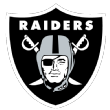
10. Derek Carr, Oakland Raiders
C%+: Minus-1.4 percent
Carr has actually been below average in C%+ in each of his first three seasons. A big part of this is due to his unique "touchdown or check down" playing style: He likes to take his shots but also is fond of dumping the ball off quickly for short gains. Statistically, Carr's biggest issue last season was third wideout Seth Roberts. Carr had a minus-18.2 percent C%+ throwing to Roberts but was plus-1.2 percent C%+ on all of his other throws. That still would not have ranked Carr inside the top 10 for 2016, however.
Most accurate QBs in 2016 by C%+

1. Matt Ryan, Atlanta Falcons
C%+: 6.6 percent
Ryan's MVP season was historically strong, and he led the league in many major statistical categories, including Total QBR, passing DVOA, yards per attempt, passer rating and C%+. Ryan did his most damage on slant routes, which he completed a league-best 83 percent of his passes. Ryan's previous career high in C%+ was 5.7 percent in 2012, so some regression is to be expected in 2017.

2. Drew Brees, New Orleans Saints
C%+: 5.8 percent
Brees has three of the top seven seasons in C%+ since 2006, so his mark of 5.8 percent from 2016 only ranks as his fifth-best season in that time. Still, Brees showed no signs of slowing down in his age-37 season with his fifth career 5,000-yard passing season. According to ESPN Stats & Information research, Brees was off target on 9.9 percent of his passes, the lowest rate of any passer in 2016.

3. Sam Bradford, Minnesota Vikings
C%+: 5.5 percent
Bradford really ate up the short passes (throws that traveled no more than five yards beyond the line of scrimmage) with the highest ranking in C%+, but he ranked only 13th on throws deeper than that. He has been trending in the right direction, posting a minus-1.9 percent C%+ with the Rams (2010-2013) and a plus-0.6 percent C%+ with the Eagles in 2015 before last season's career-best mark.

4. Kirk Cousins, Washington Redskins
C%+: 4.9 percent
Cousins ranked in the top five in C%+ for the second season in a row, but he will have to make do without wide receivers Pierre Garcon and DeSean Jackson in 2017. Cousins' C%+ dropped from 6.6 percent when throwing to those two receivers to 3.9 percent on targets to other players, however, so he still would have ranked fourth without them.

5. Russell Wilson, Seattle Seahawks
C%+: 3.6 percent
A year after leading the NFL in C%+ in 2015 (6.2 percent), leg injuries affected Wilson's playmaking ability last season. He actually finished with the least value (minus-96 DYAR) on broken plays where his creativity usually excels. Wilson's 3.6 percent C%+ is the second lowest of his career, ahead of only his 3.4 percent C%+ in 2014.

6. Dak Prescott, Dallas Cowboys
C%+: 3.5 percent
Prescott had an all-around impressive rookie season. He was the top quarterback on out routes, completing 78.4 percent of them, and one of three quarterbacks to complete at least 50 percent of his go/fly routes where the average throw was 30.4 yards down the field.

7. Tom Brady, New England Patriots
C%+: 3.4 percent
Brady is not penalized for his four-game suspension since C%+ is a rate stat. One of the main reasons for Brady's lower ranking compared to where he ranks in other 2016 stats is the impact that pressure had on his accuracy. When pressured, Brady was off-target on 45.2 percent of his passes, the only quarterback in the NFL above 40 percent last season.
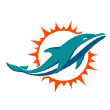
8. Ryan Tannehill, Miami Dolphins
C%+: 3.4 percent
While Tannehill ranked fourth in off-target pass rate (13.4 percent), he had the least amount of success with vertical shots to Kenny Stills (minus-2.7 percent C%+) and short passes to running back Jay Ajayi (minus-2.8 percent C%+). Unfortunately, we won't see Tannehill get a second season in Adam Gase's offense until at least 2018 because another knee injury has placed him on injured reserve. His replacement, Jay Cutler, had a 0.1 percent C%+ while playing under Gase in 2015 with the Bears. Without Gase in Chicago last season, Cutler posted a minus-4.1 percent C%+, though injuries limited Cutler to only 137 passing attempts.

9. Aaron Rodgers, Green Bay Packers
C%+: 3.3 percent
Rodgers is remembered for finishing the regular season on a tear, but in Weeks 1-11, Rodgers' C%+ was minus-0.3 percent. In the final six games -- all Green Bay wins -- Rodgers' C%+ was plus-10.5 percent, which would easily be a record since 2006 had he sustained that type of success for the full season.

10. Andy Dalton, Cincinnati Bengals
C%+: 3.0 percent
Believe it or not, Dalton has ranked in the top 15 in C%+ for each of the past five seasons. His 2015 season was his best in many ways (4.1 percent C%+), but he was still solid last season despite A.J. Green and Tyler Eifert effectively missing half of the season. Dalton's 2016 C%+ was a respectable plus-1.2 percent to receivers not named Eifert or Green.
